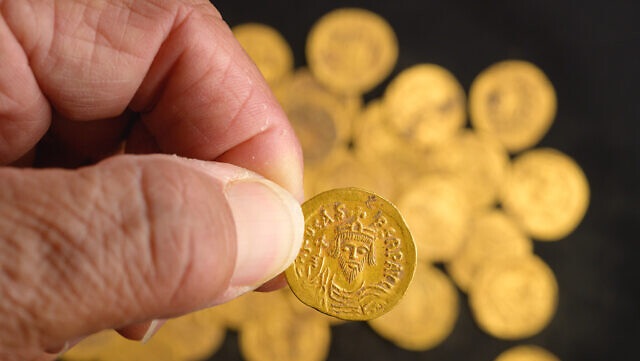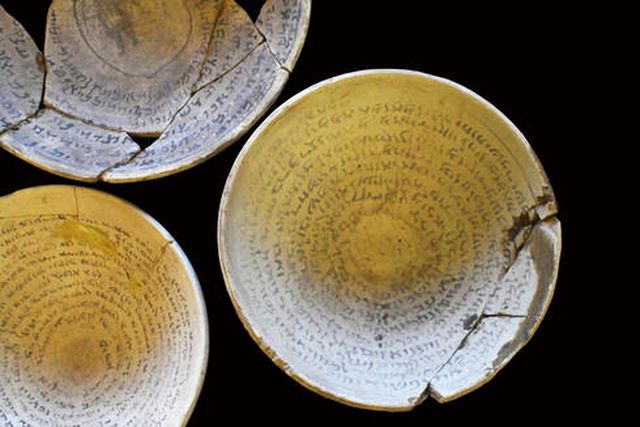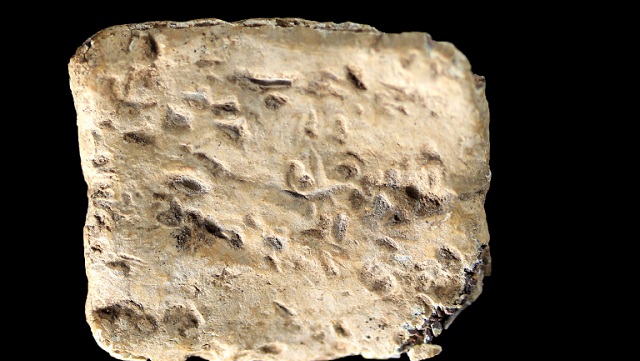Israel is best known for its history – the land of the Bible. And so it is not surprising that the country is filled with historical items just waiting to be found by archeologists. There were so many big and important archeological finds in Israel in 2022 it was hard to pick just ten, but we did. Here they are.
3000 Year Old Scarab
In November, a group of Israeli students on a simple field trip made an amazing archeological discovery: They uncovered an ancient 3000-year-old scarab in Azor, located about 7 kilometers southeast of Tel Aviv. Experts from the Israel Antiquities Authority say that the scene depicted on the scarab probably represents the bestowing of legitimacy on a local ruler.
It is not surprising that an Egyptian amulet would be found in Israel. For centuries, from the time of Abraham until the rise King David, Egyptian armies crossed through Israel numerous times as Egypt fought with the rival Hittite Empire based to the north in what is modern day Turkey. And the Bible describes a time when the Egyptians invaded the country during the First Temple period as… Read More Here
Will you offer us a hand? Every gift, regardless of size, fuels our future.
Your critical contribution enables us to maintain our independence from shareholders or wealthy owners, allowing us to keep up reporting without bias. It means we can continue to make Jewish Business News available to everyone.
You can support us for as little as $1 via PayPal at office@jewishbusinessnews.com.
Thank you.
2,000 Year Old Sling Bullet
Israeli archeologists uncovered a sling bullet (used in a slingshot) in November dating back to the Hellenistic period. The 2,200-year-old sling bullet bears the inscription “Victory of Heracles and Hauronas.” Intended to ensure victory in battle, the inscription is thought to have been a part of a type of psychological warfare.
It was uncovered in excavations conducted by the Israel Antiquities Authority in Yavne as part of the Israel Lands Authority’s initiative to expand the city, in cooperation with the Yavne Municipality… Read More Here
Evidence of Maccabean Revolt Against Greeks Uncovered
Just in time for Chanukah, Israeli archeologists uncovered a rare wooden box, found in the Judean Desert, containing a small hoard of 15 silver coins, dated to the days leading up to the Maccabean Revolt. Israel Antiquities Authority said that the box offers evidence for a dramatic moment in the history of the Jewish people: the rebellion against the Syrian Greeks, the establishment of self-rule in Israel, and the rededication of the Temple in Jerusalem in the Second Century BCE… Read More Here

Dr. Naama Sukenik from the laboratory of organic materials at the Antiquities Authority takes out the wool fabric. Photograph- Yaniv Berman, Israel Antiquities Authority
Salome Burial Cave Found
What archeologists described as “one of the most impressive burial caves discovered in Israel,” a 2000-year-old Second Temple-Period burial cave designated the Salome Cave was uncovered in the Lachish Forest. The cave was found in an excavation carried out as part of the Judean Kings’ Trail Project led by the Israel Antiquities Authority, the Ministry for Jerusalem and Heritage, and the Jewish National Fund.
It was in use through the Byzantine and Early Islamic periods, becoming known as the Salome Cave… Read More Here
Ancient Toilet
The wealthy of Jerusalem during the First Temple Period, long before the time of the Maccabees or the first exile of the Jews to Babylon, had the luxury of using their own toilets which were not available to the masses of the era. However, this did not protect them from a wide range of stomach parasites as a new study by Tel Aviv University and the Israel Antiquities Authority uncovered.
The researchers were led by Dr. Dafna Langgut of Tel Aviv University’s Jacob M. Alkow Department of Archaeology and Ancient Near… Read More Here
Rare And Prestigious Collection Of Decorated Ivories
In September, an extraordinary discovery was unearthed in Jerusalem: an assemblage of ivory plaques from the First Temple period, among the few found anywhere in the world, and the first of their kind to be found in Jerusalem. It seems that there are frequent finds from this period of time, many of which have been found to confirm historical accounts recounted in the Bible.
The ivory plaques were uncovered during excavations being conducted by… Read More Here
Ancient Bowls With Magic Spells
In March, hundreds of ancient items, including rare biblical artifacts, were captured during an anti-robbery operation conducted Monday by the Antiquities Authority’s robbery prevention unit and the local police against a Jerusalem resident suspected of illicit antiquities trading.
Among the unique items, the investigators discovered decorated bone and ivory items from the biblical period, coins, glassware, and bowls with magic spells… Read More Here
44 Byzantine Gold Coins Discovered
A treasure of 44 pure gold coins was discovered in October in the area of Banias – an ancient city near a tributary of the Jordan River in the Golan. The coins provide archeologists evidence of what they described as a dramatic moment in the history of Israel – the Muslim conquest of the Byzantine Empire and the establishment of the Umayyad Caliphate in the Middle East.
The coins are comprised entirely of gold solidus coins (a highly pure gold coin issued by Constantine during the Late Roman Empire era, with some identified as of Emperor Phocas (602–610 CE), and many minted by Emperor Heraclius (610–641 CE). The latest coins of Heraclius date the coin hoard to the time of the… Read More Here
1,850-Year-Old Coin Bronze Moon Goddess
In a first of its kind find, an 1,850-year-old coin with the sign of Cancer and the figure of the moon goddess was discovered in July by the Israel Antiquities Authority’s (IAA) Marine Archaeology Unit off the Carmel coast. It is a part of a series of zodiac coins.
The IAA described it as an exceptionally well-preserved spectacular rare bronze coin which was found on the sea bed. The Luna Moon Goddess coin… Read More Here
Archeologists Find The Name Of God
In what was described as a convincing proof of the existence of the blessing and cursing ceremony that the Bible records as having been conducted on two mountain tops in ancient Israel, an ancient amulet was uncovered on Mount Ebal on which the name of God is inscribed.
Archaeologists Scott Strippling, Prof. Gershon Galil of Haifa University, Peter Gert van der Vijn and Jones Gettenberg of the Czech Academy of Sciences and experts in deciphering ancient texts succeeded in deciphering the ancient Hebrew script on the amulet that was discovered on the… Read More Here






